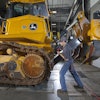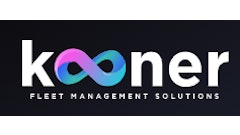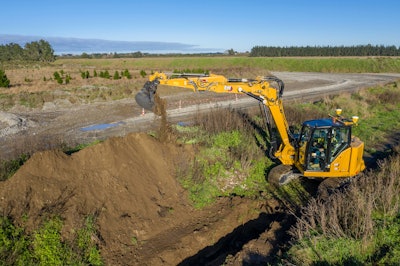
Telematics is a prime example of how construction equipment has undergone a technological transformation during the past decade, resulting in significant improvements in productivity, efficiency, safety and environmental impact, noted the Association of Equipment Manufacturers (AEM) in its recent white paper, “Benefits of Construction Equipment Technologies and Their Impact on Society.”
AEM notes the growing widespread adoption of telematics, attributed to state and federal funding to create:
- Efficiencies and long-term ROI
- Incentives to drive adoption
- Education of key stakeholders to understand the value and securing of needed infrastructure for the technology to work
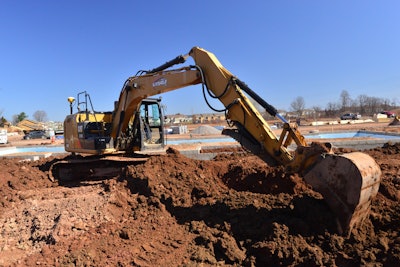 Trimble telematics help operators improve operations and increase efficiency.Trimble
Trimble telematics help operators improve operations and increase efficiency.Trimble
In addition to machine and grade control, engines and drivetrains, and digital control systems, telematics have served over the past three decades to achieve a 79% reduction in worksite injuries, 83% reduction in worksite fatalities associated with equipment, 96% reduction in NOx and particulate emissions per gallon of diesel fuel consumed and a 13% reduction in carbon dioxide emissions per machine hour.
Machine telematics have been enabled by other technologies such as GPS tracking and satellite positioning, high-bandwidth internet connectivity, smart sensors, advanced imagery, advanced computation and networking, and cloud computing.
Telematics Evolution
Trimble’s Mike Granruth, original equipment manufacturer (OEM) business development manager, points out that telematics have evolved from knowing where a piece of equipment is to knowing what that equipment is doing.
“That type of information empowers not only those in charge of managing equipment but also those who manage jobsites and the business as a whole,” he added. “It all ties to the concept of executing a project that is on time, on budget and all done safely.”
Granruth noted that all major equipment manufacturers now offer some level of connectivity and telematics on new equipment.
Geofencing
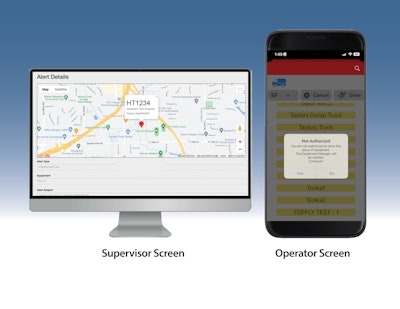 The unauthorized user function alerts management if someone not trained accesses the equipment.Fleetwatcher
The unauthorized user function alerts management if someone not trained accesses the equipment.Fleetwatcher
Managers can set up geofences around areas that they don’t want a machine to be able to access—such as a low marshland near a construction site—enhancing safety, security and environmental impact.
Sensors
Telematics’ data-gathering sensors monitor how much fuel or diesel exhaust fluid (DEF) is in a machine, mitigating challenges such as having a crew show up in the morning to discover that equipment is low on DEF, AEM noted. Telematics also drive fuel savings by slashing fuel consumption.
According to Granruth, without telematics, managers don’t have the machine visibility needed to put procedures in place and change operator behavior, such as allowing a machine to excessively idle, which is hard on an engine and aftertreatment system and wastes fuel.
The AEM whitepaper stated that 10% to 30% of the fuel consumed by construction equipment is from nonproductive idling, with telematics reducing nonproductive idling by an average of 10% to 15%, which also leads to a positive environmental impact and jobsite efficiency through analyzing equipment use.
Construction companies that save time also save money.
“We like to talk about ‘cheaper, faster, better, greener,’” Granruth said. “The construction company wins and so does the consumer. Labor and other project costs are reduced. Roads aren’t closed as long. Taxpayer dollars are saved on public projects. The carbon footprint is reduced as a result of being more efficient.”
A good equipment manager can start to get a handle on whether certain equipment is even necessary, Polzer pointed out.
Maintenance
 The dashboard must give personnel the information they need to do their jobs.Tenna
The dashboard must give personnel the information they need to do their jobs.Tenna
Telematics systems also have fault code functionality, with different sensors monitoring if the engine and other machine components are working correctly, which can be done remotely, enabling equipment managers to avoid unplanned downtime by scheduling service when critical fault codes emerge. That keeps equipment running in peak condition and projects on track, according to the AEM whitepaper.
While preventive maintenance focuses on scheduling routine maintenance, predictive maintenance actively monitors machine performance to determine which maintenance needs to be done and when.
That helps determine when certain components should be replaced before failure. For example: telematics data may show that hoses on an excavator tend to break after a third spike in hydraulic pressure.
Using predictive maintenance and monitoring telematics data, an equipment manager can decide to replace that hose after the second spike before a failure is likely to occur and may further save downtime by doing the hose replacement during the machine’s normal scheduled maintenance, AEM noted.
Polzer said it’s also important to make it easier for equipment managers and technicians to access and use telematics data. For example, Case Construction Equipment integrates telematics data with its often-consulted electronic service manuals.
Trimble differentiates equipment analytics from telematics “because more and more what's happening is you hear buzzwords like AI, prognostics and predictive whereas telematics traditionally has been a reactive field—meaning hours, location and maybe some fault codes,” Granruth said.
Trend Identification & Cost Reductions
Trimble is driving more towards the analytics and analysis aspect “so you could do some ‘what if’ scenarios, looking at the data, and identifying trends,” Granruth added.
The benefit of using telematics data for construction companies is to detect patterns and find information that helps reduce costs, improve efficiency, mitigate risks, promote safety, and make better financial decisions, noted Russ Young, chief business development officer, Tenna.
Key categories that should be available in any asset management system include:
- Asset tracking: Asset location; movement; and usage of construction assets, such as equipment, vehicles and materials
- Fuel consumption: Identify areas where improvements can be made, leading to significant cost savings, especially for fleets of vehicles and equipment
- Driver behavior: Monitoring speeding, harsh braking and acceleration, and idling
- Maintenance: Monitor the condition of vehicles and equipment to identify potential maintenance issues and setting use-based preventive maintenance schedules
- Productivity: Track the productivity of workers and teams to identify areas for improvement and to make better resource allocation decisions
Equipment use is particularly important when it comes to fuel usage, Granruth said. Adding idle time is a significant cost for any sized construction company. While it’s often the low-hanging fruit, reducing it through telematics implementation saves fuel costs in the operating budget, he said.
Productivity is also key, according to Granruth.
“I differ between utilization and productivity. Productivity is about how effectively the machines are being used—how the machine is actually performing … to get the job done given the time allocated,” he added.
“That’s important when contractors start to look at bidding on different jobs and if they know one operator is more productive than the other, and it's the same job. But telematics data can allow you to capture that not only for better utilization of that machine but also from an operator coaching world.”
Machine health is another key category, Granruth said.
“It’s all about maximizing uptime through the analysis of fault codes and remotely diagnosing problems. If there’s a particular problem in the field and you can remotely identify that, you can prepare to remedy that—from what parts you need, what service you need, and what we often call the first-time fix rate,” he added.
“If you have to send a technician to fix the machine, you don't want to have to go out there one time to diagnose it and then another time to have to fix it.”
Tony Salati, senior regional manager for Earthwave Technologies, said usage and asset productivity are prime telematics data categories.
The company’s GPS-based FleetWatcher monitors vehicle speed relative to posted speed limits, fast starts, hard braking and hard turns from a FleetWatcher app or in-vehicle device. It flags unauthorized users when an operator signs onto a piece of equipment on which they have not been trained or certified.
The escalating idle alert feature pings supervisors when equipment sits idle for a period. Reduced idle time saves moneyFleetwatcher
Reduced idle time saves moneyFleetwatcher
The Jon M. Hall company has FleetWatcher installed on 220 pieces of construction equipment and 170 on-road assets. The company reduced idle hours by 23,000 the first year, a savings of $1 million of which $300,000 was fuel savings.
Gathering telematics data is “a way to be onsite without being onsite, letting your iron tell the story of what's really going on with projects and not just through timesheets and phone calls,” says Salati.
Equipment costs are often the second highest in many companies to labor costs, said Granruth, adding telematics mitigates such expenses.
Improved Operations
Young said it is important for construction companies to gather telematics data because it can help them improve their operations in several ways, including:
- Reducing costs, such as fuel consumption, driver behavior and maintenance: Location data can point out where equipment is being hoarded or attachments are going missing.
- Improving efficiency in asset use and worker productivity: For example, seeing resource allocation and maintenance schedule data together ensures that all needed assets for a jobsite are in proper working condition and dispatched on time.
- Mitigating risks such as theft, damage, and accidents: For example, geofence or after-hours motion data can generate alerts if assets are moved outside of a designated area or during non-working hours, preventing theft and helping recover stolen equipment more quickly.
- Improving safety: Pairing dash cams with telematics can further protect companies and drivers from unfair litigation.
- Making better decisions about resource allocation, scheduling and maintenance: Identifying underused or overused assets helps make more informed purchasing decisions or avoid unnecessary rental costs.
- Reducing environmental impact: Identifying ways to reduce fuel consumption and emissions helps companies reduce their environmental impact and meet sustainability goals.
Data Management With Different Systems
Addressing how contractors manage data from different sources, Granruth noted as much as OEMs may want a company to have one brand in their fleet, a mixed fleet is the reality, adding that fleet management software needs to support industry standards.
Trimble is a strategic alliance partner with the Association of Equipment Management Professionals, which drove the telematics standard, formerly called the AEMP standard which led to the ISO 15143-3 standard, an international standard supported by all the major players and that allows for better interoperability and visibility across an entire mixed fleet, Granruth noted.
The Need for Actionable Data
 Notifications with actionable data let personnel know when equipment needs attention.Tenna
Notifications with actionable data let personnel know when equipment needs attention.Tenna
“The best approach is to understand the user of the data, and then more importantly, what action they're going to take with the data,” he said.
An OEM looks for data that drives an understanding of equipment performance, its emissions and whether it meets regulatory requirements, Granruth said.
Dealers seek parts and service information.
“They sell you the machine, but just like in the automotive industry, it's now about the repeat business for parts and services,” Granruth said, adding the end user focuses on data elements around productivity, fuel usage, and utilization.
More is not necessarily better where data is concerned, Young pointed out, adding more important is that data is ingested and returned in a meaningful way that identifies trends, patterns, and problems.
Actionable data versus receiving all of the data is critical, as indicated in the article “3 Reasons to Start Using Actionable Fleet Technology Data,” which outlines how fleet technology, including video telematics and IoT devices, can help increase a construction contractor's revenue and advance efficiencies to improve the fleet’s bottom line.
Real-time actionable data is critical to making quick operational decisions, Salati noted, adding otherwise, it’s all summary data.
Data speaking to the key goals of reduced costs, increased productivity, and improved safety and risk mitigation is required. It should be presented in meaningful dashboards or reports that identify trends and spot issues to make it easier for different departments and teams within a construction company to collaborate and communicate, said Young.
Rental companies derive benefits from telematics data through better billing and planned asset maintenance, noted Salati.
“Rental companies make money by renting equipment. To do that effectively, they need to essentially minimize machine downtime,” Granruth noted. “A typical rental company will rent you a piece of equipment, but they'll already have the next person lined up to take that equipment even before you bring that equipment back.
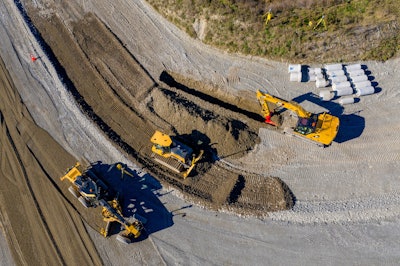 Working across different equipment types, telematics guide operation and maintenance requirements, among other functions.Trimble
Working across different equipment types, telematics guide operation and maintenance requirements, among other functions.Trimble
Telematics data can be leveraged to remotely report machine hours and fault codes in such a way that before the company renting the machine returns it, the rental company knows it will have to carry out maintenance before letting it leave the lot again, Granruth noted.
“Certain rental companies may rent you a piece of equipment on a fixed contract. They’ll say that they’re renting it to you for 400 hours a month to be used for whatever you're going to use it for. Without telematics, they have no insight,” he said.
“A week into that contract period, you could be in 350 hours, and you still have three more weeks to go. They run into two problems. One is you bring it back, and it's got 700 hours on it and they thought it was only going to have 400. Now they can't rent it. The [second and] bigger problem is now they have to try to collect more money from you after you're done with the machine.”
Of the many benefits rental companies derive from telematics data, operator or driver data can protect a rental company from liability if the equipment is being used at excessive speeds or in otherwise dangerous ways, Young said.
Smart equipment management is a modern, transformative approach integrating advanced technologies and intelligent systems that optimize construction equipment monitoring, use and maintenance, as noted in “Smart Equipment Management: IoT Integration in Construction.”
As the article “5 Skills a Telematics Point Person Needs” indicates, equipment owners using telematics to monitor remote equipment should find the right point person to monitor telematics. This person should have a balanced set of technical, equipment and fleet-management skills. They will be key to rallying the company behind the technology and quickly building return on investment.
Granruth noted that in site management, while the focus tends to be on the machine, decisions are made at the site level.
“Think about it in three tiers,” he said. “There’s managing the machine—that’s somebody like a fleet operator or an equipment manager whose sole job is to manage equipment.
“Managing the site is the collective piece. The third piece, which they all tie together, is managing the business. The fleet operator or fleet equipment manager [keeps] the machine running on the job; the supervisor or foreman [keeps] the site running efficiently and effectively, and then [the person] managing the business [does] it in a cost-effective way. They are all part of one thread in this equipment space.”




